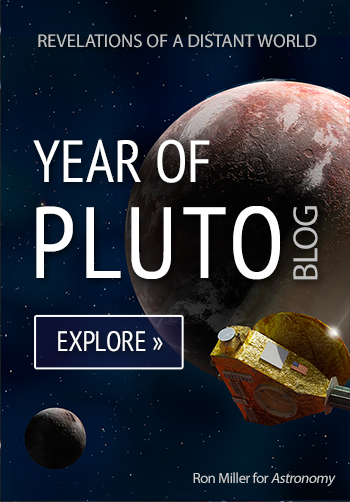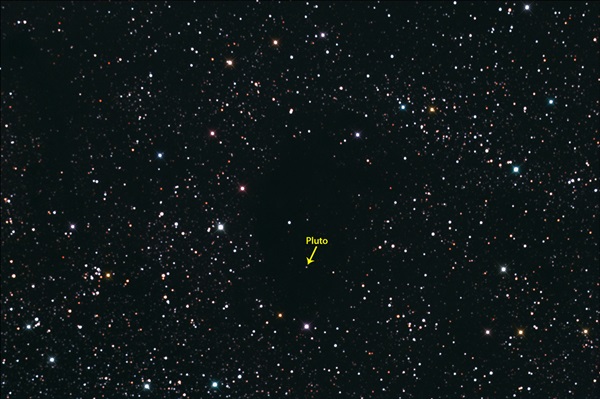Key Takeaways:
Coincidentally, Pluto also comes to peak visibility in Earth’s sky during July. Although the dwarf planet shines feebly at magnitude 14.1, observers under a dark sky with the right equipment who know exactly where to look can glimpse the dim glow with their own eyes. Pluto reaches opposition July 6, when it lies opposite the Sun in our sky and stays visible all night. But the planet’s visibility changes so slowly that it remains a tempting target all month.
To take advantage of this Pluto viewing opportunity, you’ll want to use an 8-inch or larger telescope. Although expert observers under excellent conditions have spotted the speck of light through 5-inch scopes, the added light-gathering power of larger instruments makes the task far easier. If you don’t have a telescope big enough, consider hooking up with a member of a local astronomy club who does.
Once you’ve got your gear ready, line up a first-class observing site. For Pluto hunting, this means one that offers a dark sky as well as good seeing conditions. You’ll get steadier eyepiece views if you look out over a grassy field or a wooded expanse. Don’t aim your scope over areas that absorb the Sun’s heat in daytime and reradiate it at night, such as asphalt parking lots or your neighbor’s house.
Once the night you’ve targeted for your search arrives, plan to reach your site by sunset. Set up your scope right away so it can start to cool to the air temperature. In the hour or so this process takes, your eyes will adapt to the darkness.
Sliding through the Archer
Now you are ready to search for Pluto. First, home in on a triangle of bright stars in the northeastern part of Sagittarius the Archer. Pi (π), Omicron (ο), and Xi2 (ξ2) Sagittarii lie due north of the handle in that constellation’s conspicuous Teapot asterism.













